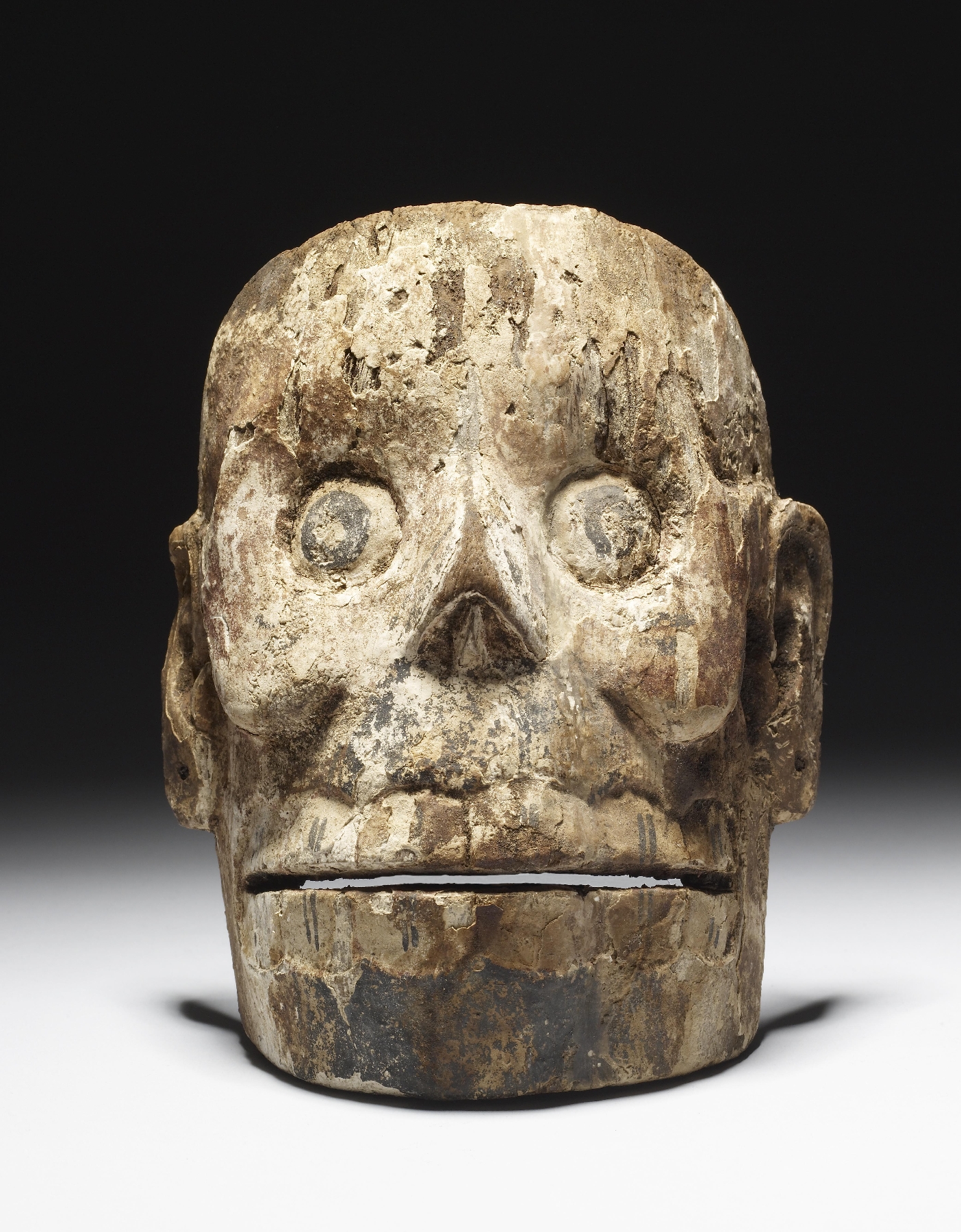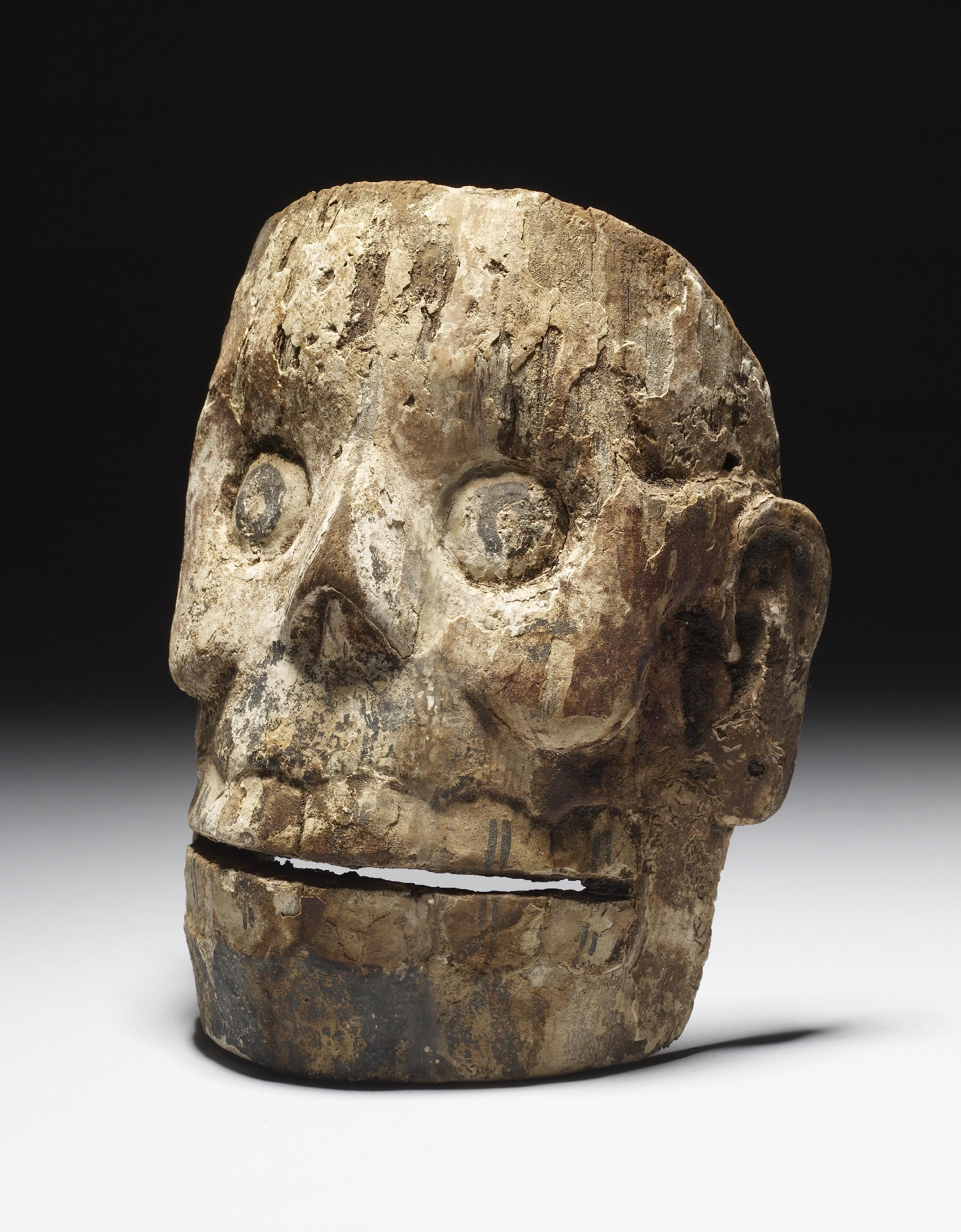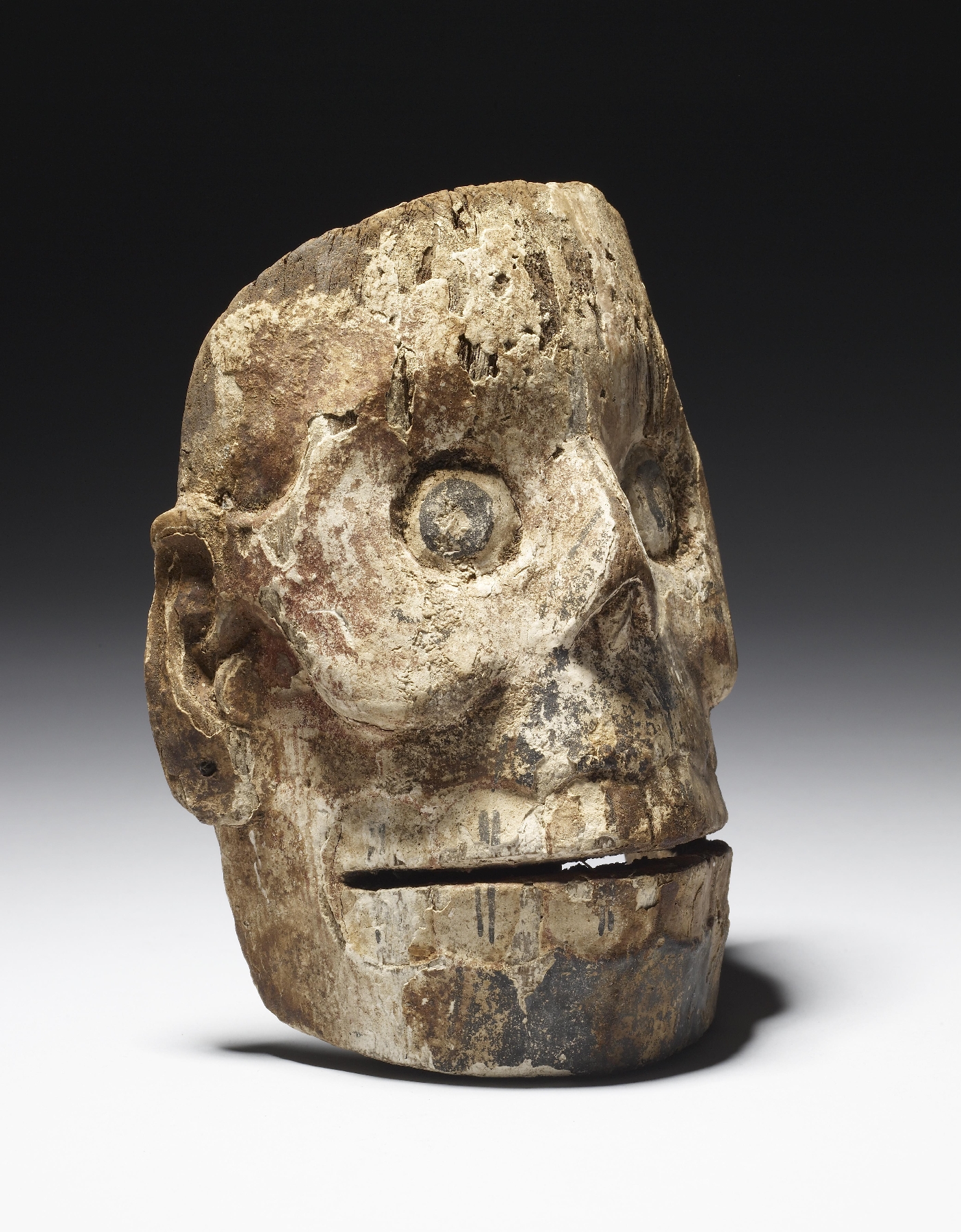Mask of Mictlantecuhtli, Lord of the Underworld
(Ancient Americas )
This panel is a mask of the skeletal face of Mictlantecuhtli, Lord of the Underworld and deity associated with the dead in Aztec belief.Throughout Mesoamerica, the wearing of masks was central to the performance of religious rituals and reenactments of myths and history. The face is the center of identity, and by changing one's face, a person can transcend the bounds of self, social expectations, and even earthly limitations. In this transformed state, the human becomes the god, supernatural being or mythic hero portrayed. Masks of skeletal heads, whether human or animal, are relatively common, for death played a central role in Mexica religion. Death was one of the twenty daysigns of the Mexican calendar, indicating its essential place in the natural cycle of the cosmos.
Death also was directly connected to the concept of regeneration and resurrection, which was a basic principle in Aztec religious philosophy.
A key Mexica myth recounts the journey of Ehecatl, a wind god who was an aspect of Quetzalcóatl ("Feathered Serpent"), a powerful Mesoamerican deity. Ehecatl travels to Mictlán, the land of the dead, where he retrieves the bones of long-dead ancestors. Mictlantecuhtli, the ruler of this land, had thought to allow Ehecatl to remove the bones, but changed his mind, temporarliy trapping the other god in a pit. Finally, Mictlantecuhtli relented, and a new race of humans, corresponding to our world, was made from the bones retrieved.
While difficult to see, close examination of this work has revealed small reddish circles on the cheeks of the mask, which probably refer to decay. These are similar to splotches shown on the deity's face in a representation in the pictorial manuscript known as the Codex Borgia. This wood mask was probably tied to a statue or wood figure representing the deity Mictlantecuhtli, rather than being worn by a human, since it has no holes for eyes. Such masks have only survived very infrequently, making this a rare example of Aztec devotional material culture.
Provenance
Provenance (from the French provenir, 'to come from/forth') is the chronology of the ownership, custody, or location of a historical object. Learn more about provenance at the Walters.
Throckmorton Fine Arts, New York [date and mode of acquisition unknown]; John G. Bourne, 1990s, by purchase; Walters Art Museum, 2009, by gift.
Exhibitions
| 2012-2013 | Exploring Art of the Ancient Americas: The John Bourne Collection Gift. The Walters Art Museum, Baltimore; Frist Center for the Visual Arts, Nashville. |
| 1998-2008 | Art of Ancient America, 1500 B.C.-1400 A.D.. Museum of New Mexico, Santa Fe. |
Conservation
| Date | Description | Narrative |
|---|---|---|
| 9/12/2011 | Treatment | examined for condition; examined for exhibition; stabilized; infrared spectroscopy |
Geographies
Mexico (Place of Origin)
Measurements
H: 6 3/4 x W: 5 1/2 x D: 2 13/16 in. (17.2 x 14 x 7.2 cm)
Credit Line
Gift of John Bourne, 2009
Location in Museum
Not on view
Accession Number
In libraries, galleries, museums, and archives, an accession number is a unique identifier assigned to each object in the collection.
In libraries, galleries, museums, and archives, an accession number is a unique identifier assigned to each object in the collection.
2009.20.1






